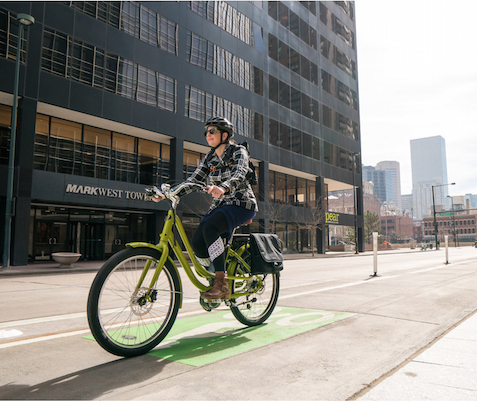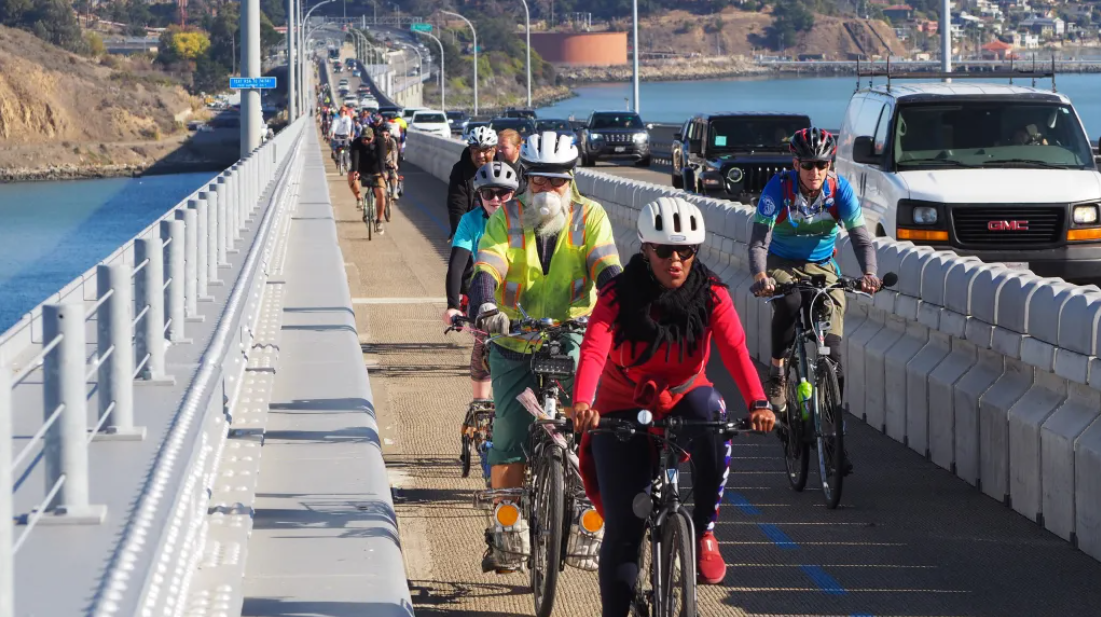MTA Begins Its First Automated Count of Bicyclists
4:23 PM PST on February 25, 2009
 Look closely and you can see the diamond-shaped loops containing an automated bicycle counter on Fell Street between Scott and Divisadero.
Look closely and you can see the diamond-shaped loops containing an automated bicycle counter on Fell Street between Scott and Divisadero. Accurate bicycle and pedestrian counts are too often neglected by traffic engineers but the MTA has begun experimenting with technology that will eventually allow its
engineers to gather the most comprehensive data of bicyclists ever taken in San Francisco.
By the SFBC's estimate, there are about
120,000 bicyclists in the city, but previous efforts to get official numbers have been half-hearted. MTA interns have conducted manual counts once a year, typically in
the late summer, during peak hours at a few intersections, providing what the SFBC calls a "flimsy snapshot of mode share and usage." The agency also runs manual counts on Bike-to-Work Day.
But earlier this month, the MTA installed a Zelt Inductive Loop, designed by the French company Eco Counter, on Fell Street between Scott and Divisadero. According to Oliver Gajda, MTA's bicycle program manager, it works like a radio antenna. When metal in a bicycle wheel comes within close proximity of the device it
sends a signal. The settings are designed to avoid counting cars and motorcycles. It can count several bikes at once and record which direction they're traveling. According to the vendor's website:
Each time a bicycle goes over the loop, the systemdetects the two wheels' electromagnetic signature and registers a count.The loop is 1.5m (5ft) in length and more than one loop may be linked tothe same logger.

One big fault, however, is that it can't count bicyclists who drift outside the bike lane, or more than an inch away from the sensors. This is a problematic issue for that particular section of Fell Street where the device is installed because bicyclists often move out of the bike lane to avoid the mess of obstructing motorists lined up to get into the gas station on Divisadero. Cheaper gas being offered recently at that gas station isn't helping.
"It's something we're working to address," said Gajda.
 The glut of cars blocking the bike lane on Fell Street as motorists wait to get into the gas station on Divis.
The glut of cars blocking the bike lane on Fell Street as motorists wait to get into the gas station on Divis. By comparison, the magnetometers designed by Streetline, which my colleague Matthew Roth wrote about recently in a story about SFPark, can detect metals within five feet of the sensor. Should Streetline or a vendor with similar technology win the SFPark contract, there could be an opportunity to collect bike count data in the trial areas.
Gajda said the MTA will be working with other vendors to test out a variety of technologies. He said he got excited about the idea after attending a Velo City
Conference where there was a display of bicycle counting technologies
being used in some Nordic countries.
The goal is to purchase 15 automated counters that would be installed
at locations all over the city before the city's bicycle injunction is
lifted. Gajda estimates the program will cost about $170,000 and plans to submit
a funding request soon to the San Francisco County Transportation
Authority, which doles out the money for such programs.
"The great thing about looking at this from a purely academic point of
view is that the injunction has kind of put a bubble over San
Francisco. And so people have asked, how much does bicycling increase
if you start to stripe bike lanes? This gives us the opportunity to
have the whole city as a laboratory after the injunction is lifted. If
we can get those counters in before the injunction is lifted then we
can lift that bubble up and start striping bike lanes again and then
we’ll be a model for other cities in terms of before and after
numbers."
In theory, said Gajda, the data could eventually be beamed to a satellite
where it would allow the MTA to capture it in real time. It's all part of a larger effort by the MTA to improve the data it collects as it becomes a more multi-modal agency, said MTA spokesman Judson True.
Andy Thornley, the SFBC program director, is excited at the prospect of having some accurate bicycle data in San Francisco, and hopes all of the automated counters can be installed before Bike to Work Day on May 14th:
Apart from satisfying academic/professional curiosity, having
good bike counts is essential to casemaking for increased funding and
policy commitment for bike facilities -- much bike traffic is
invisible at present, making it difficult to justify allocating money
and street space for better bikeways. By counting bikes well, and
showing the positive effects of investment in bikeways, it'll be
easier (or anyhow less difficult) to rebalance transportation spending
(and rebalance street space) to do more good things for bike
traffic.
Photos by Bryan Goebel
Stay in touch
Sign up for our free newsletter




